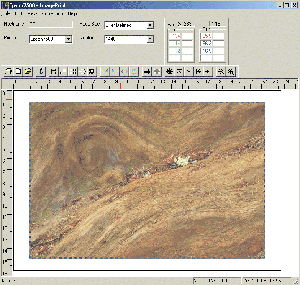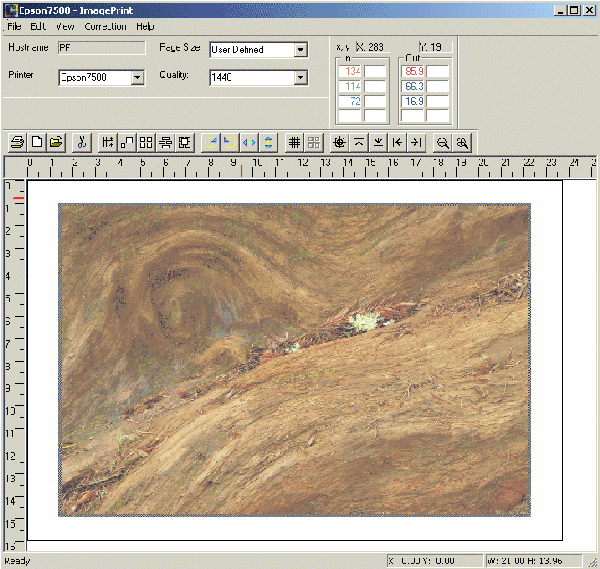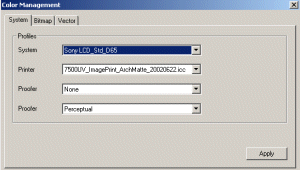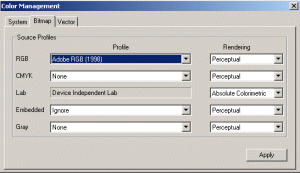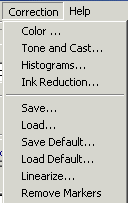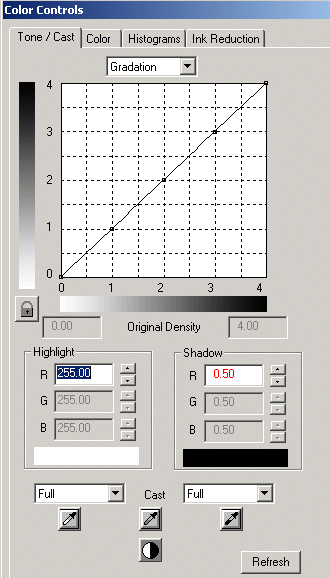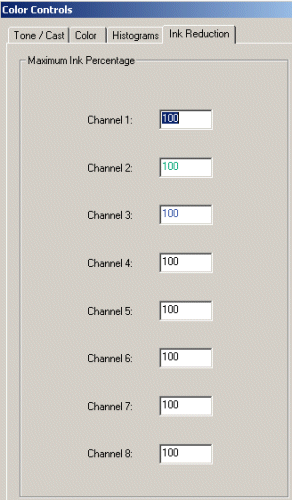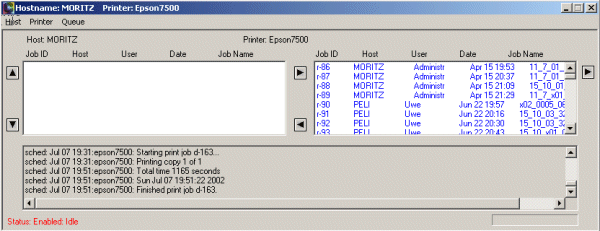|
|
Printing Insights #015ColorByte ImagePrint: "To RIP or not to RIP"
|
| Myths and Fact about RIPs (Raster Imaging Processors) |
Facts:
Myths:
All commercial printing labs use RIPs It is very clear that commercial printing labs need RIPs for the following reasons:
RIPs are not cheap There are hardly any useful RIPs below $1000 for the Epson 7500 and they can cost you a couple thousand dollars. RIPs need to be complicated Some really are but our candidate ImagePrint from ColorByte's is very simple to use. As we only look into the RIP as a tool for fine art prints we cannot judge whether other RIPs have more control or not. We think ImagePrint delivers what we need at this moment. |
| Is ImagePrint worth the Investment? |
You probably know that there is no absolute answer to this question. So the real question for a fine art photographer comes down to the criterion of quality (as for most the time saving aspect and better layouting is no real issue). Let's determine which factors are important for the quality of a print:
Printing engine Of course the printing engine is the ultimate limit for the printing quality from a certain printer model. Printer Driver A good example of what a driver can do is Jon Cones "Piezography B&W Kit". It consists of a set of inks and a new driver for the different Epson printers. You never know what a printer can do until you get the best driver and also excellent profiles. Here is what a driver adds to the quality:
Profiles It is amazing how much profiles can do to get better results (see also our Eye-One review):
|
We like the result of the ImagePrint very much. The images look very smooth and very fine in their dithering. Here is what ColorByte says about their latest version: "No grains, no patterns, no visible artifacts. No kidding. Our latest screening technology is officially, second to none. 5.0 delivers perfectly smooth transitions in skin tones, shadow areas, and other hard to reproduce transitions. Use IMAGEPRINT 5.0 and join the growing number of professionals who understand that sometimes it’s what you can’t see that makes all the difference." OK this is marketing but first we want to see a better result from an other RIP which is as easy useable as ImagePrint. Be sure we like the results better than what we get from the Epson 7500 drivers. Problems with the Epson 7500 drivers 1. The settings of the Epson 7500 driver is not in terms of DPI, ink usage and so forth. Epson only allows to select certain limited number of Epson Papers (missing "Enhanced Matte") and then the driver decides which DPI to use. We always use 1440 DPI with the Epson 7500 and so we cheat on it setting the driver to "Luster Paper" even if we print on "Enhanced Matte". But we have no idea whether this is an optimal setting or not. 2. The Epson driver uses the Windows spooler which adds some complications and a lot of print delay for the spooling while Image print starts instantly (just limited by the initialization phase of the printer). |
| ImagePrint Overview |
|
| The core of the ImagePrint user interface is a print layout program. We rarely print multiple photos at a time but it is very easy with ImagePrint. Every image is color managed:
As all our photos are in "Adobe RGB 1998" we set in dialog "B" the "RGB space" to "Adobe RGB 1998" and request the embedded profiles to be ignored. Creating Profiles for ImagePrint Note: You cannot use the Epson profiles for the use with ImagePrint. Profiles have always(!) to be created with the same printer, ink, paper, DPI, driver and other settings to be used in the final image production. If you print a target with ImagePrint you turn color management off by selecting in dialog "B" "none" for the RGB color space. Once you have created your profile you can then select the profile in dialog "A". Be aware that ImagePrint uses its own profile directory and not(!) the one used by Windows. Controls in ImagePrint ImagePrint allows far more control than the Epson drivers:
|
| We try to avoid using these controls as we like to work only with good profiles. Actually ColorByte supplies quite some library of profiles for many papers and printers. We did not use these profiles as we strongly believe in custom printer specific profiles and we created those with our Eye-One Match (see our review) solution. But sometimes these corrections can come in handy (especially the ink limits). All these settings can then also be saved and later recalled. |
The ImagePrint Spooler |
| ImagePrint gets installed on a printer server (copyright protected with a dongle) but also comes with it's own spooler. The printer user Interface can run on any number of client machines and deligates the final job to the print server (you can also mix PCs and Macs, although we did no tests on Macs). |
|
The spooler allows to monitor the progress. But you also can repeat jobs as all job data are available after the print is terminated. Note: Make sure that all printer profiles you use on the client machines are also copied to the printer server. |
| Conclusion |
ColorByte's ImagePrint is a first class RIP for fine art photography:
|
| ImagePrint is clearly our current reference interface to our Epson 7500. Important is the fact that ColorByte is permanently improving all drivers (not just for the latest and hottest printers). |
We hope to have the chance to use ImagePrint soon with one of the new Epson 2200/7600/9600 printers. Very interesting will be most likely the new B&W features of Image Print 5.0: "Using our first of its kind TINT PICKER you can enhance grayscale
images from warm to cool, moss to mauve and all points in between –
without changing your ink set*. With IMAGEPRINT 5.0, you won’t
see those annoying hue shifts from highlights to shadows that plague
monochrome printing. What you will see, are seamless tonal transitions
with no loss of detail and superior maximum densities on both art and
gloss papers." |
Needless to say: Highly Recommended. You have to decide whether it fits into your budget. |
| You can order demo copies from ColorByte and judge yourself. |
|
|
| For Comments post in our News Group |






